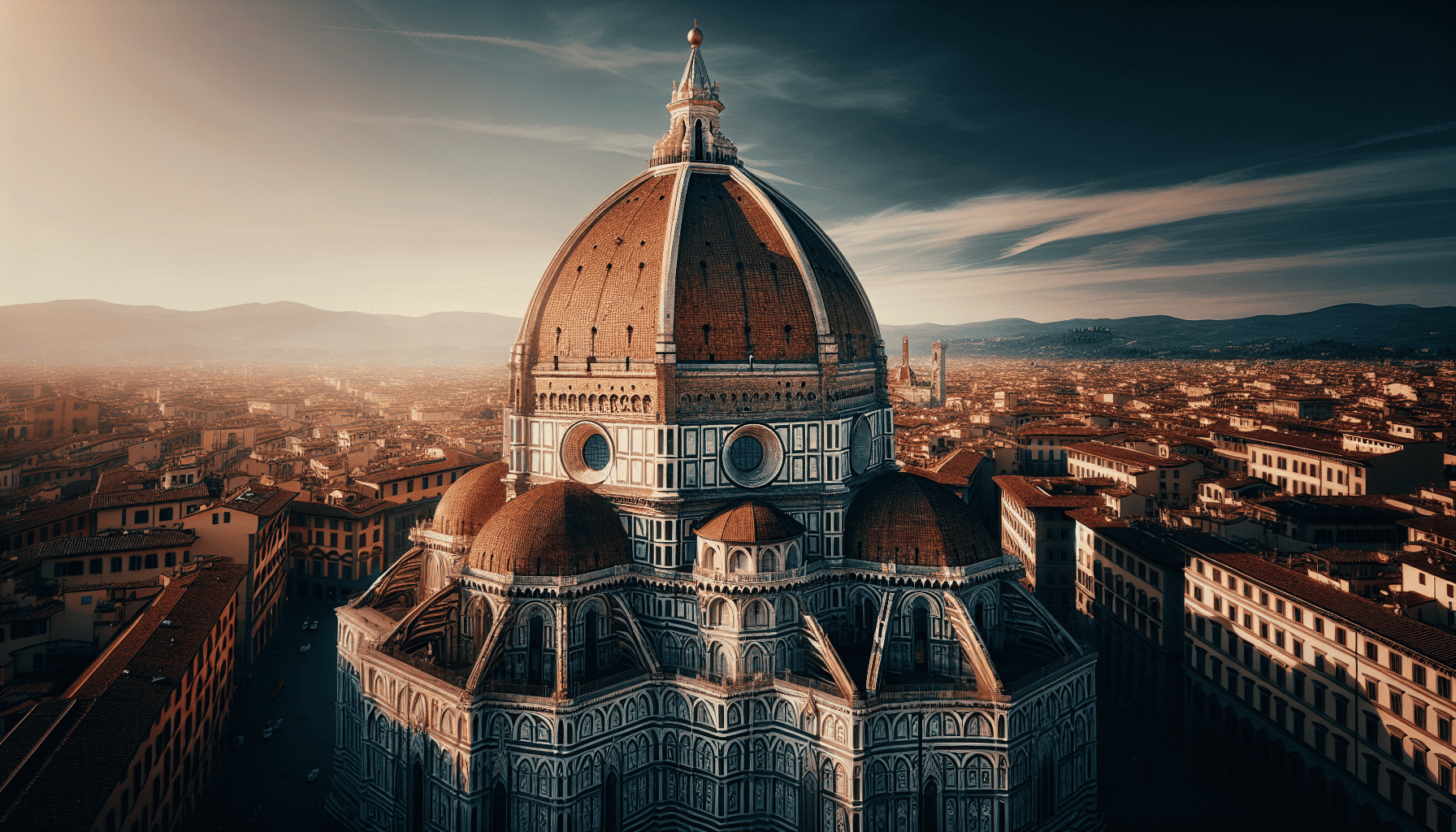Nestled in the heart of Florence, the Duomo, officially known as Santa Maria del Fiore, stands as a testament to the genius of Renaissance architecture. This monumental cathedral not only dominates the city's skyline but also marks a pivotal period in the history of art and architecture. Celebrated for its stunning dome and revolutionary design, the Duomo encapsulates the spirit of innovation and creativity that defined the Renaissance era.
The construction of the cathedral spanned several generations, starting in 1296 when the project was first conceived by architect Arnolfo di Cambio in a Gothic style. However, it wasn't until the 15th century that the Duomo reached its architectural zenith with the addition of its iconic dome, a feat that would cement its place in history. Filippo Brunelleschi, a man of incredible vision and an emblem of Renaissance ingenuity, was the mastermind behind this architectural marvel.
Brunelleschi faced the daunting challenge of constructing a dome that could span the cathedral's vast octagonal base without collapsing under its own weight. Traditional methods were insufficient for a project of such magnitude, necessitating a radical departure from the architectural norms of the time. In response, Brunelleschi designed a double shell structure comprising an inner and outer dome, connected by a series of ribs and a herringbone brick pattern that distributed the weight efficiently.
The result was nothing short of extraordinary. The dome, completed in 1436, not only pushed the boundaries of engineering but also redefined artistic expression in architecture. It was the largest in the world at the time, an accolade it retained for centuries, symbolizing the new possibilities unlocked by Renaissance thinking. The innovative design required no external supports or buttresses, a concept that was revolutionary and inspired future generations of architects.
Beyond its architectural prowess, the Duomo is adorned with breathtaking art and intricate features that reflect the rich cultural tapestry of the Renaissance. The exterior façade, with its vibrant hues of pink, green, and white marble, creates a striking visual impression. Inside, visitors are greeted by an opulent array of stained glass windows and frescoes, including Giorgio Vasari's depiction of the Last Judgment, which graces the interior of the dome.
The Duomo is more than just an architectural masterpiece; it is a symbol of Florence’s pivotal role in the Renaissance. It represents a era when art and science converged, leading to advancements that transformed society. Florence was at the epicenter of this cultural explosion, attracting artists, scholars, and thinkers who were inspired by the city's commitment to beauty and knowledge.
Today, the Duomo remains a source of inspiration and an enduring symbol of human achievement. It draws millions of visitors each year who are eager to witness firsthand the brilliance of Renaissance architecture. Standing beneath its magnificent dome, one cannot help but reflect on the ingenuity and ambition that propelled humanity into a new age of discovery and enlightenment.
In conclusion, the Duomo of Florence is not merely a building; it is a celebration of the heights of human creativity and the spirit of rebirth that defined the Renaissance. Its enduring legacy continues to captivate and inspire, reminding us of the boundless possibilities that emerge when innovation and artistry come together.
